When discussing how pickups sound, we're left grasping for hopelessly imprecise words. Warm. Jangly. Chimey. Meaty. Scooped. Buttery. Punchy. Twangy. Boxy. Glassy.
Rather than provide a guide that offers vague adjectives like some pickup sommelier, we're letting the pickups themselves do the work. Cover the screen and quiz your friends. Do your own A/B tests. Come up with your own descriptive lingo. There's no wrong way to use this.
For the sake of consistency, we only used solidbody models with passive pickups and ran them all through the same Victoria 45410 amp, with the same Whirlwind cable, and recorded them with the same Shure SM57 and Aston Spirit mics.
Amp settings remained the same throughout. Volume and tone knobs on every guitar were wide open the entire time. A Fulltone OCD was used for the "dirty" examples.
You can find more information and shop for each pickup type below.
Stratocaster Single Coil Pickups

In the same way players hold up PAF humbuckers or the Tele bridge pickup as benchmarks, the Strat’s neck pickup has that same halo. Jimi Hendrix and Stevie Ray Vaughan, in particular, forever cemented in our minds exactly what these pickups could do.
In the same way people often fault the Tele neck pickup for being too thin, the Strat’s bridge pickup often gets the same criticism. With the right drive and saturation, however, the bridge on a Strat can really bite.
Designed By: Leo Fender
First Appearance: 1954 Fender Stratocaster
Now Seen In: All Fender Stratocaster iterations and imitations (i.e. Nash S-63, Squier Stratocaster)
Telecaster Single Coil Pickups

Telecaster pickups are an odd couple: the bridge pickup is often held up as the gold standard for bridge pickups everywhere, while the neck pickup is often criticized for a perceived lack of depth.
That criticism, however, quickly fades when listening to players like Julian Lage (who tours with nothing but a ‘54 blackguard Tele and a ‘58 Fender Champ), Bill Frisell or Robben Ford use the Tele’s neck pickup. When you stop comparing it to a Strat neck pickup and appreciate it on its own, it can be a thing of beauty.
Designed By: Leo Fender
First Appearance: 1950 Fender Broadcaster (renamed Telecaster in 1952)
Now Seen In: All Fender Telecaster iterations and imitations (i.e. Nash T-52, T-57, and T-63, and Squier Telecasters)
Jazzmaster Single Coil Pickups
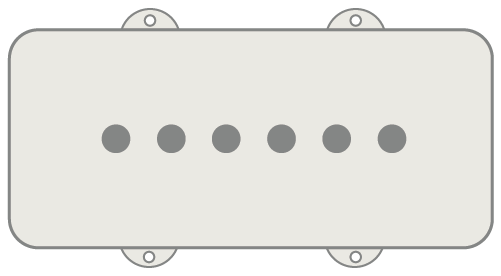
Original Jazzmaster pickups were not P-90s or some type of humbucker. They were a unique single-coil design that provided a warmer, more mellow sound that, along with the curvy, offset body shape that catered to seated guitarists, meant to draw in the jazz crowd.
Despite the marketing intentions, the model was eventually co-opted by a range of non-jazz players like Lee Ranaldo and Thurston Moore of Sonic Youth, songster Elvis Costello, and hard rocker Troy Van Leeuwen.
Nels Cline carries a Jazzmaster into jazz clubs regularly, but we doubt the way he uses it matches what Leo Fender had in mind in 1958…
Designed By: Leo Fender
First Appearance: 1958 Fender Jazzmaster
Now Seen In: All Fender Jazzmaster iterations and imitations (i.e. Nash JM-63, Squier Jazzmasters)
Jaguar Single Coil Pickups

Jaguar pickups are similar in many ways to Strat pickups but with metal “claws” to reduce hum and an on-body, rather than in-body, mount. Combined with the Jaguar’s shorter 24” scale (it debuted as Fender’s top-of-the-line attempt to draw in Gibson players), you get an entirely different single-coil vibe.
The sound came to define surf rock in the ‘60s and later a certain segment of the punk and indie scene in the ‘80s, when Jaguars were the cheapest used Fenders available.
Designed By: Leo Fender
First Appearance: 1962 Fender Jaguar
Now Seen In: Fender Jaguar models, Nash JG-63
Lipstick Pickups

The original lipstick pickups were bar magnets wrapped in copper wire stuck inside tubes built literally to house lipstick.
The model in the video has a neck pickup placed farther from the fingerboard than most models, which admittedly biases the example towards more of a middle position sound. The lipstick tonal character, however, is still there.
Designed By: Nathan Daniel
First Appearance: 1954 Danelectro models (and eventually Silvertone and Airline models)
Now Seen In: Danelectro and Silvertone reissues, Charvel Surfcaster, Fender Vintage Modified Surf Stratocaster
Gold Foil Pickups

Gold foils actually use rubber magnets, like thicker versions of those holding up the family photos on your fridge. Both major variants - Teisco-made and DeArmond “double moustache” models - are single coil pickups, albeit with far fewer winds than a Strat pickup.
With a wide frequency response and a loud, clear output, these are favorites for slide guitar (see Ry Cooder and Blake Mills) and for driving hard with OD and fuzz pedals (see Annie Clark and Dan Auerbach).
Designed By: Harry DeArmond/Teisco
First Appearance: 1960s made-in-Japan and Harmony models
Now Seen In: Supro reissues, boutique builds like Fano and Collings
Toaster Pickups
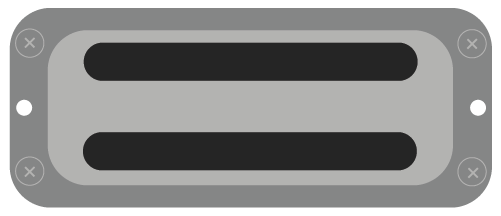
Developed in 1953 as a way to move away from the initial Rickenbacker pickups that used horseshoe magnets, “toasters” came to define the jangle and chime associated with the company. They are lower-output, treble-biased pickups compared to most other single coils.
Designed By: F.C. Hall and Paul Barth
First Appearance: Mid-1950s Rickenbacker models
Now Seen In: Rickenbacker models with the Vintage Pickup option, select Collings models with Lollar Broilers (a modern reinterpretation)
P-90 Pickups
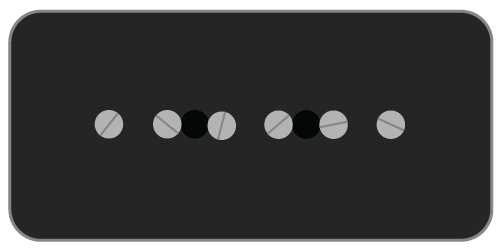
The P-90 is the most ancient pickup on this list. It is also one of the most versatile. The quest for a workable electric guitar pickup started with the “Charlie Christian” design in the 1930s, evolved into some transitional designs in the early 1940s, and eventually coalesced into the six-in-line pole piece design we see today.
The P-90 has survived for over 70 years, powering everything from Grant Green’s jazz licks to Billie Joe Armstrong’s pop-punk distortion.
Designed By: Walt Fuller
First Appearance: 1946 Gibson ES-175 and Switchmaster
Now Seen In: Gibson Les Paul Special, Junior and Tribute models, Gibson ES-330, select Gibson hollowbody reissues, Epiphone Casino and Riviera P93 models, select Reverend, Collings, and Squier Vintage Modified Telecaster models
PAF Humbuckers
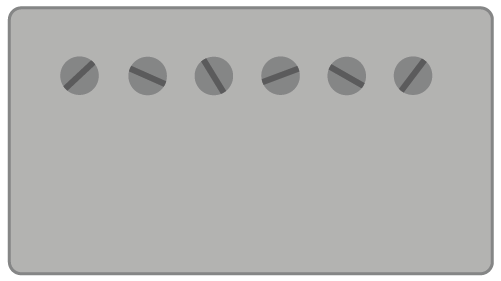
No other pickup has been imitated or worshipped in the way the Seth Lover-designed PAF humbucker has. Revered for its warmth, depth, and incredible response when overdriven, this design has spawned its owned market of imitations and remains a huge part of Gibson’s reissue and Custom Shop lines.
Designed By: Seth Lover
First Appearance: 1957 Gibson Les Paul and hollowbody models
Now Seen In: Pickups aiming to capture the original PAF sound can be found in nearly every Gibson solidbody model, as well as the Gibson ES-335 and current Gibson ES-175. Many Heritage, Epiphone, PRS and Collings models use humbuckers chasing PAF tone
Wide Range Humbuckers
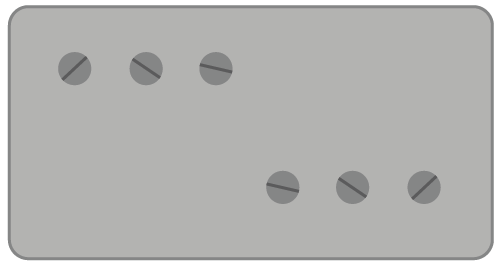
Fender brought on Seth Lover - designer of the PAF humbucker - in 1967. Looking to compete in the Gibson-dominated arena for players who preferred humbuckers, they asked Lover to design a ‘bucker that would still have Fender clarity and sparkle.
The resulting "wide range" humbucker soon found its own loyal following, though it never was lionized in the same way as early Gibson humbuckers.
Designed By: Seth Lover
First Appearance: 1972 Fender Telecaster Deluxe, Custom and Thinline models
Now Seen In: Fender Telecaster Deluxe, Custom and Thinline models, Fender Modern Player Starcaster, Lee Ranaldo Signature Jazzmaster
'Tron Pickups
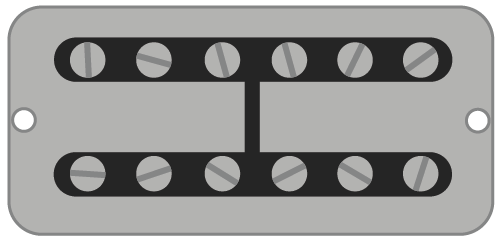
While Gibson PAFs are more talked about, the Filter’Tron was the first true humbucker. Developed at the request of Chet Atkins to eliminate the noise he was getting from the single coils in his Gretsch at the time, the dual-coil ‘Tron design ended up somewhere in between a PAF humbucker and a Tele-type single coil in tone.
This pickup helped define the sound of rockabilly, but the template has since expanded to include nuanced variations, including the HiLo’Tron, Power’Tron, and Broad’Tron pickups.
Designed By: Ray Butts
First Appearance: Mid-1950s Gretsch models
Now Seen In: All Gretsch models, Fender Cabronita Telecaster models, TV Jones models, select Collings models (with Lollartrons)
Mini Humbuckers
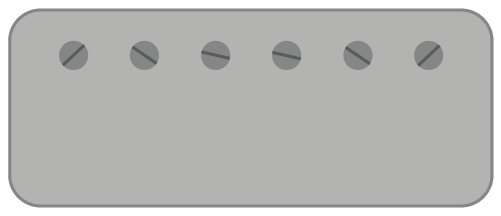
Not to be confused with Firebird or Johnny Smith pickups, the original mini-humbuckers were built with a similar setup as PAF humbuckers, only smaller. Minis have a bar magnet positioned under each coil, with adjustable pole pieces on one side. Firebird pickups have no adjustable pole pieces, with bar magnets situated inside each coil.
Designed By: Epiphone
First Appearance: Early ‘60s Epiphone models
Now Seen In: Gibson Les Paul Deluxe and Tribute models, some Epiphone Sheraton, Riviera and Wilshire reissues, and select Collings models
Modern PRS Humbuckers
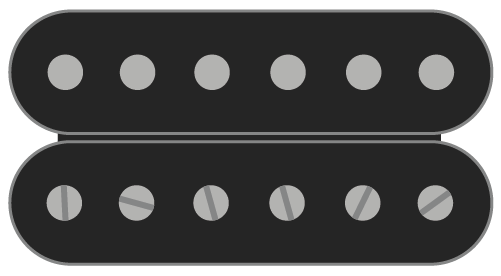
Okay, okay. Some of you may not consider this a “classic.” But Paul’s homage to the best parts of vintage humbuckers has been around for over 30 years. This particular 85/15 pickup aims to capture his early efforts that powered the sound of Carlos Santana and Al Di Meola, among others.
Designed By: Paul Reed Smith
First Appearance: 1985 PRS models (“The NAMM 20”)
Now Seen In: PRS models across the board
